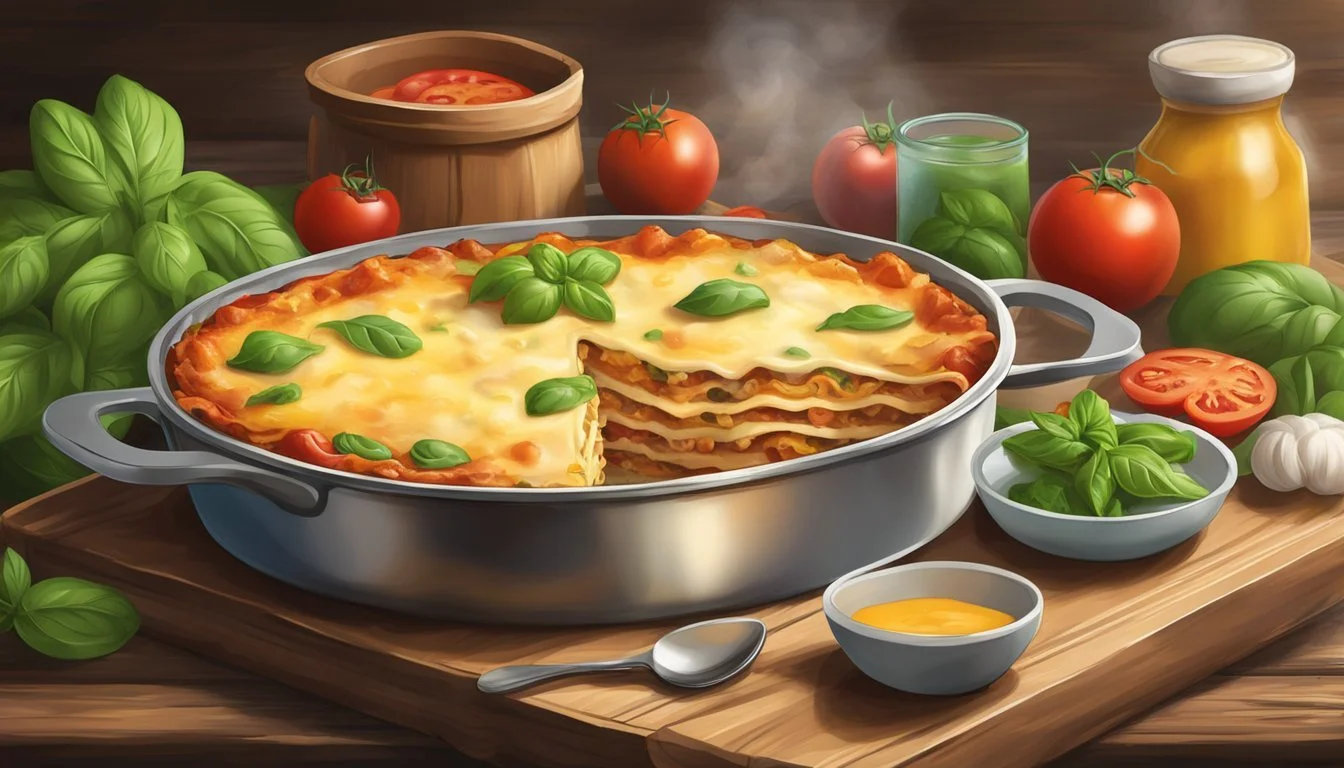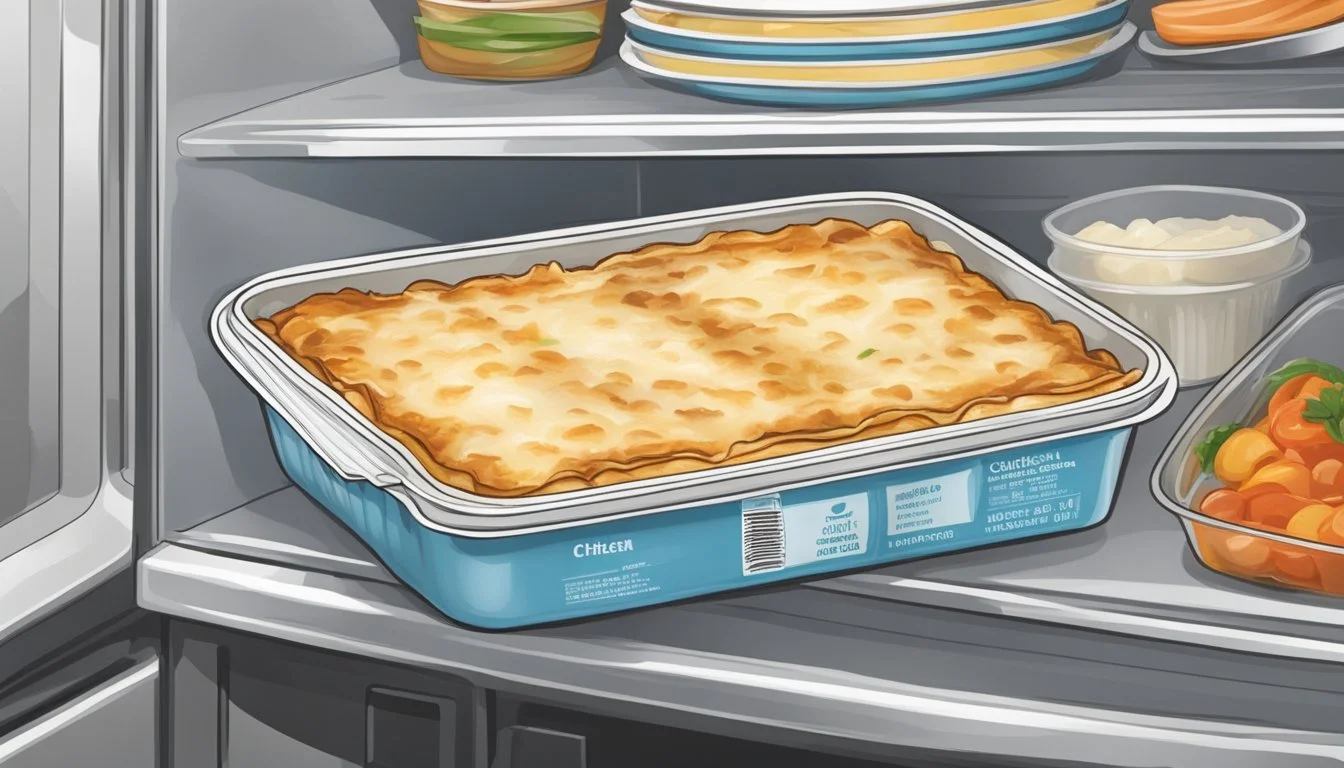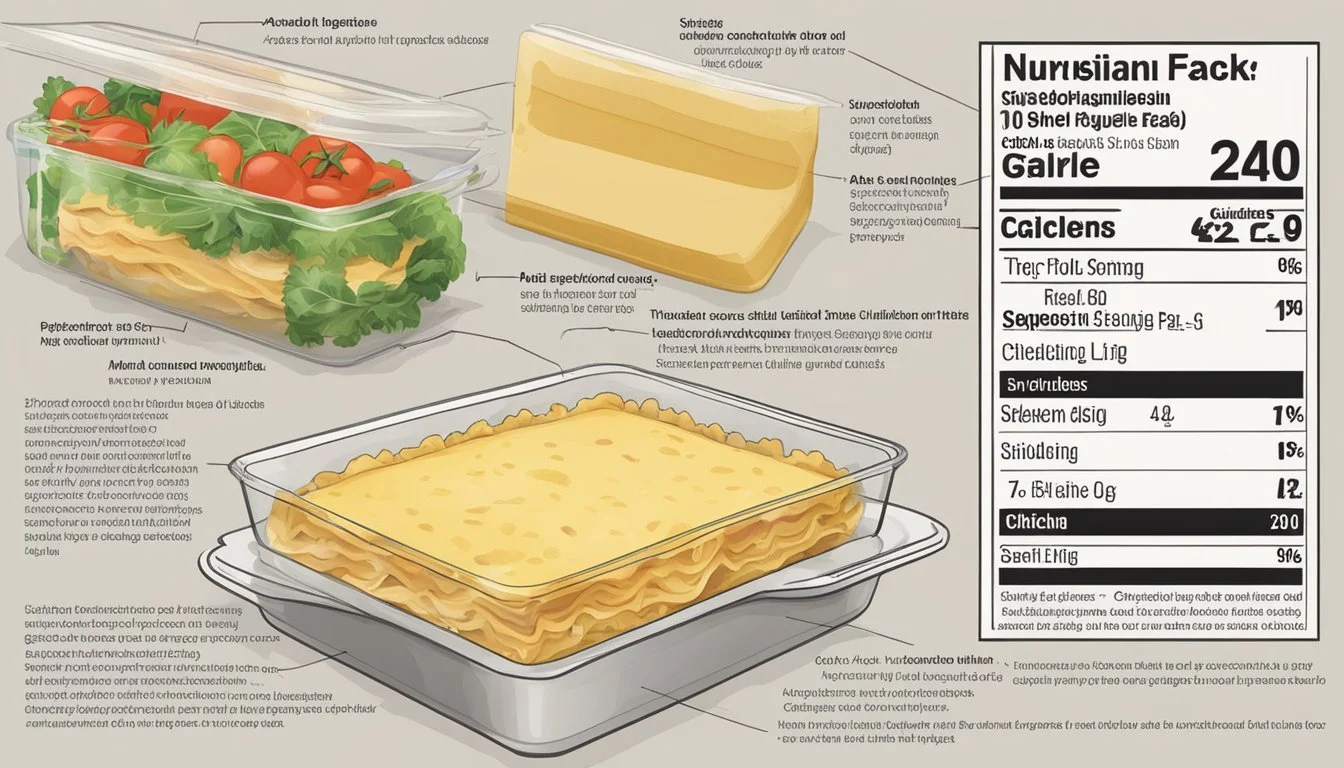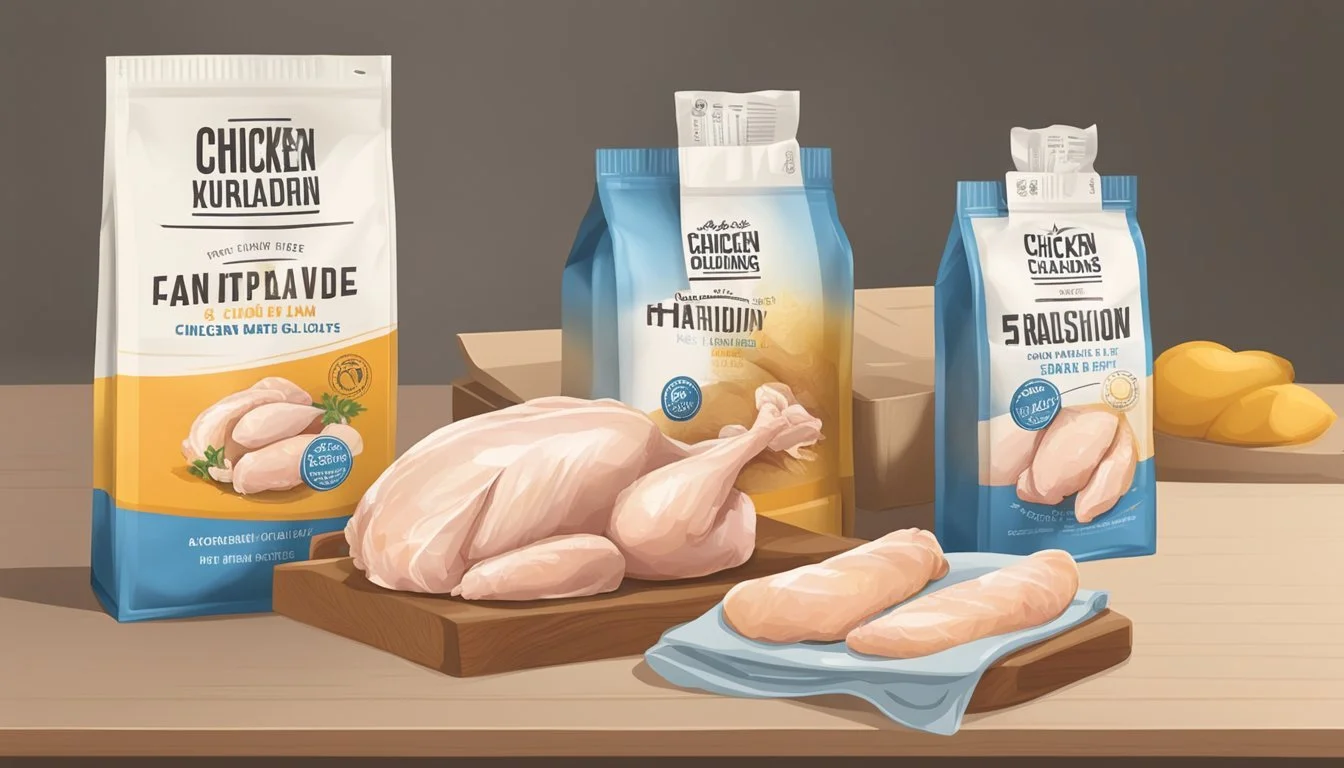How Long Does Chicken Lasagna Last?
Storage Tips for Maximum Freshness
Chicken lasagna, with its layers of tender pasta, seasoned chicken, rich sauce, and creamy cheese, is a delightful comfort food for many. Knowing how long you can safely keep this dish in the refrigerator is crucial to enjoy its flavors without compromising food safety. Properly stored, cooked chicken lasagna can last in the refrigerator for 3 to 4 days.
For those who like to prepare meals in advance, extending the shelf life of your chicken lasagna is also an option. By freezing it in airtight containers or heavy-duty freezer bags, you can enjoy this dish for up to three months. Clear guidelines on storage can help preserve the quality and taste, ensuring every bite remains delicious.
Understanding the storage life of chicken lasagna not only prevents food waste but also helps maintain the dish’s enjoyable texture and flavors. Whether you’re meal prepping or saving leftovers, knowing the best practices for keeping your chicken lasagna fresh is essential.
Understanding Chicken Lasagna
Chicken lasagna is a flavorful dish made from layers of noodles, chicken, vegetables, and a variety of cheeses. This hearty meal also offers a range of nutritional benefits depending on the specific ingredients used.
Composition and Ingredients
Chicken lasagna typically includes layers of noodles interspersed with a rich mixture of shredded chicken, vegetables such as spinach, zucchini, and mushrooms, and a blend of cheeses.
The cheese mix often contains ricotta, mozzarella, and parmesan. The sauce is essential and can be a bechamel, a spaghetti sauce, or a tomato sauce.
Olive oil, garlic, and herbs like thyme and parsley enhance the flavor. Homemade lasagna allows for customization, ensuring the use of high-quality, fresh ingredients.
Nutritional Value
The nutritional content of chicken lasagna varies based on its composition. Chicken provides a good source of protein.
Cheeses like mozzarella and parmesan add calcium and vitamin D, while vegetables such as spinach and zucchini contribute essential vitamins and fiber.
Using olive oil instead of butter can offer healthier fats. The overall calorie and fat content will be higher with cream cheese or bechamel sauces, so choosing lighter ingredients can make the dish more nutritious.
Safe Storage Practices
Proper storage of chicken lasagna is essential to maintain its freshness and safety. Following specific guidelines on containers and temperature conditions will ensure longevity and prevent spoilage.
Optimal Storage Containers
Using airtight containers is crucial for storing chicken lasagna. Glass or plastic containers with secure lids prevent moisture loss and contamination. Wrapping lasagna tightly in aluminum foil or plastic wrap can also be effective, especially when combined with a freezer bag for freezing.
For freezing, select freezer-safe containers or heavy-duty freezer bags. These materials help maintain the lasagna's quality and prevent freezer burn. Ensure lasagna is cool completely before wrapping to avoid condensation, which can lead to ice crystals forming.
Temperature and Conditions
Keep lasagna in the refrigerator or freezer to maximize its shelf life. In the refrigerator, maintain a temperature below 40°F. Lasagna typically lasts 3-5 days in the fridge but should not exceed this timeframe to avoid spoilage.
For longer storage, freezing is ideal. Store the lasagna at 0°F or below. When stored correctly, frozen lasagna can last 2-3 months while preserving its flavor and texture. Reheat leftovers to an internal temperature of 165°F to ensure safety.
Avoid leaving lasagna at room temperature for extended periods, as this can promote bacterial growth and compromise safety.
Freshness & Quality Preservation
Maintaining the freshness and quality of chicken lasagna is essential for safe consumption and optimal flavor. Understanding what indicators to watch for and the factors that contribute to spoilage can ensure that your meal remains both delicious and safe to eat.
Signs of Fresh Lasagna
Appearance: Fresh lasagna should have a vibrant appearance without any discoloration. The layers should be distinct, and the surface should not have any signs of mold.
Texture: The pasta layers and filling should maintain a firm, moist texture. Avoid any slimy texture as it indicates bacterial growth.
Smell: A fresh lasagna will have a savory aroma. Be alert to any off odors or sour smells, which can indicate spoilage.
Flavor: When tasting, it should retain its rich, distinct flavors without any off-tasting notes.
Factors Leading to Spoilage
Moisture: High moisture content can promote bacterial growth. Store lasagna in airtight containers to limit moisture exposure.
Temperature: Keeping lasagna at temperatures below 40°F is crucial. Higher temperatures can rapidly increase bacterial activity, leading to faster spoilage.
Ingredients: Fresh ingredients may have shorter shelf lives compared to canned or shelf-stable items. Ensuring that ingredients are fresh and stored correctly plays a vital role in preservation.
Storage: Proper storage is paramount. Use airtight containers and make sure the refrigerator is at an appropriate temperature to minimize spoilage and prevent foodborne illnesses.
Continuous vigilance about the freshness and quality indicators can help you enjoy your chicken lasagna safely, maintaining its superior flavor and texture.
Shelf Life Guidelines
Knowing how to properly store chicken lasagna can significantly extend its shelf life while maintaining its best quality. Key factors include whether it is stored in the refrigerator or freezer and the typical longevity of such a dish under different conditions.
Refrigerator vs. Freezer
Chicken lasagna's shelf life varies based on storage. In the refrigerator, properly stored lasagna can last 3 to 5 days. Aim to refrigerate lasagna within 2 hours of cooking to prevent spoilage. Store it in airtight containers to keep it fresher, longer.
For an extended shelf life, the freezer is a better option. Frozen lasagna can last 2 to 3 months if it is wrapped securely. Use heavy-duty freezer bags or freezer-safe containers for the best results. Thaw it in the fridge before reheating to maintain texture and flavor.
Longevity of Chicken Lasagna
When refrigerated, cooked chicken lasagna remains safe for up to 5 days. Keep a close eye on the dish for signs of spoilage, like off smells or mold.
For freezing, it holds high quality for 2-3 months. After thawing, consume within 24 hours. Avoid re-freezing thawed lasagna to maintain flavor and texture. For leftovers, follow safe storage guidelines to prevent foodborne illnesses, ensuring you enjoy your lasagna at its best.
Serving and Reheating
Understanding proper reheating methods and serving temperatures ensures chicken lasagna remains delicious and safe to eat. Follow these guidelines for effective reheating and serving.
Proper Heating Techniques
Oven: Reheating chicken lasagna in the oven is preferred. Preheat the oven to 375°F (190°C). Cover the lasagna with aluminum foil to prevent drying out. Place it in an oven-safe dish and heat for 20-25 minutes. Check the internal temperature; it should reach 165°F (74°C).
Microwave: For quick reheating, use a microwave. Place the lasagna in a microwave-safe dish, sprinkling a little water or sauce to maintain moisture. Cover the dish and heat on medium power for 1-2 minutes. Stir mid-way to ensure even heating and check the temperature.
Air Fryer: Set the air fryer to 350°F (175°C). Place the lasagna in the basket and heat for 5-7 minutes. Ensure the internal temperature reaches 165°F (74°C).
Stovetop: Use a large skillet to reheat lasagna on the stovetop. Add a little water or broth, cover, and simmer on medium-low heat for about 20 minutes. Occasionally shake the pan to prevent sticking.
Serving Temperatures
For optimal taste, serve chicken lasagna at a warm temperature.
Ideal Temperature: Lasagna should be served at around 165°F (74°C). This ensures it is both safe and appealing to eat.
Resting Time: Allow the lasagna to rest for 5-10 minutes after reheating. This helps the flavors meld together and makes slicing easier.
Avoid Overheating: Reheating lasagna too much can lead to dryness. Always monitor the internal temperature and remove it from heat once it reaches the desired level.
Ensuring proper heating techniques and serving temperatures will keep chicken lasagna tasty and safe for everyone to enjoy.
Freezing and Defrosting
Proper freezing and defrosting methods are crucial for maintaining the quality of chicken lasagna. Below are detailed steps and tips for both freezing and thawing to ensure your lasagna remains delicious and safe to eat.
How to Freeze Chicken Lasagna
When preparing to freeze chicken lasagna, consider portioning for convenience. Single-serving portions can be particularly handy for quick meals. Begin by assembling the lasagna as usual, layering pasta, chicken, sauce, and cheese.
After assembly, allow the lasagna to cool if it’s been cooked. Wrap each portion or the entire dish tightly with plastic wrap or foil. Place the wrapped lasagna in a freezer-safe, airtight container or a heavy-duty freezer bag to prevent freezer burn. Label the container with the date to keep track of storage time, as frozen lasagna is best consumed within three months.
Thawing Techniques
There are several effective methods for thawing chicken lasagna safely. The refrigerator method is the safest way, though it requires planning. Place the frozen lasagna in the refrigerator a day before you intend to cook it. This slow thaw ensures even defrosting without compromising safety.
For quicker thawing, use the cold water method. Submerge the airtight container of lasagna in a sink or bowl of cold water, changing the water every 30 minutes. This method can dramatically reduce thawing time.
Once thawed, bake the lasagna in a preheated oven at 350°F (180°C) until it reaches an internal temperature of 165°F (74°C). Allow it to cool slightly before serving.
Health and Safety Considerations
Proper attention to health and safety is essential when storing and handling chicken lasagna to prevent foodborne illnesses and ensure the dish remains safe to eat. Key considerations include avoiding cross-contamination and knowing when to discard any spoiled portions.
Avoiding Foodborne Illness
Avoid Cross-Contamination: Always keep raw chicken separate from other ingredients. Use separate cutting boards and utensils for chicken to prevent the spread of harmful bacteria.
Cooking: Ensure chicken lasagna is cooked to an internal temperature of 165°F (74°C) to kill any harmful bacteria. Use a food thermometer to check the temperature.
Cooling: Allow lasagna to cool to room temperature before refrigerating. This prevents condensation, which can lead to bacterial growth.
Storage: Refrigerate chicken lasagna within two hours of cooking. Store it in an airtight container to maintain freshness and reduce the risk of contamination.
Proper Handling and Disposal
Handling Leftovers: Safely handle any leftovers by reheating them to at least 165°F (74°C) before consumption. This helps to eliminate any potential bacteria that may have developed during storage.
Spoilage: Be vigilant about signs of spoilage. Discard lasagna that exhibits any off smells, discoloration, or unusual textures. These can indicate bacterial growth.
Discard by: Chicken lasagna should be discarded if it has been in the refrigerator for more than 3-5 days, as recommended food safety guidelines suggest the risk of bacterial growth increases significantly after this period.
Waste Reduction: To reduce waste, portion out the lasagna into smaller servings if you anticipate not consuming it within the recommended time frame and freeze portions that can later be reheated safely.
Creative Uses for Leftovers
Transforming leftover chicken lasagna into new dishes can help minimize waste and provide varied, delicious meals. From soups to casseroles, these creative solutions can turn your cold lasagna into culinary masterpieces.
Innovative Recipe Ideas
Lasagna Soup:
Chop the leftover lasagna into small pieces. Heat a pot, adding some broth (chicken or vegetable) and diced tomatoes. Stir in the lasagna pieces and let it simmer until everything is well-heated. Garnish with grated cheese and fresh basil.
Lasagna Frittata: Slice the cold lasagna into small chunks. In a bowl, whisk eggs with milk or cream. Pour this mixture into a hot skillet, add the lasagna pieces, and cook until the eggs set. Flip to cook the other side, then serve warm.
Lasagna Casserole: Cut the leftover lasagna into bite-sized pieces. In a baking dish, layer these pieces with additional sauce, vegetables, and some grated cheese. Bake in the oven at 350°F until bubbly and golden on top.
Recommended Kitchen Tools
Proper tools for baking and storing chicken lasagna ensure longevity and quality. These tools help maintain the dish's freshness and flavor while preventing spoilage.
Essentials for Baking and Storage
Baking Dish: Use an oven-safe dish for baking chicken lasagna. Pyrex or ceramic dishes are excellent choices. They distribute heat evenly and can go directly from the oven to the table. Make sure the dish has enough depth to hold multiple layers.
Airtight Containers: Post-baking, transfer lasagna to airtight containers. This helps retain moisture and flavor while preventing bacterial growth. Glass containers are preferred as they do not stain or retain odors.
Freezer Bags: If freezing, opt for heavy-duty freezer bags. They are space-efficient and provide a tight seal that minimizes freezer burn. Ensure you remove excess air before sealing.
Plastic Wrap or Aluminum Foil: Use plastic wrap or aluminum foil for an extra layer of protection. Wrap tightly around the container or dish to keep unwanted moisture out and reduce the risk of spoilage.
Spatula: A sturdy spatula helps serve lasagna without breaking layers. Silicone or metal spatulas are ideal for maintaining the dish's structural integrity.









